Abstract 12/2015
Table of content
Maciej Kruszyna – The proposal of introduction of an underground sections in the Wroclaw’s public transport
Marcin Gromadzki, Krzysztof Grzelec – Standards of technical equipment in public transport – conditions and perspectives of application
Jakub Zawieska, Krzysztof Skotak – Sustainable transport policies in Polish cities in the context of air quality and emissions from transport sector part II
Łukasz Michalski, Michał Habura, Marcin Tekieli – Systems of weigh-in-motion heavily-loaded vehicles
Abstracts
Maciej Kruszyna
The proposal of introduction of an underground sections in the Wroclaw’s public transport
Abstract: The article presents an original proposal to introduce an underground sections in public transport system of Wroclaw. The idea is caused by potential lack of capacity of existing routes in the city center due to the concept of development of rail transport of the city and agglomeration. This development means, among other things, increasing of number of lines and courses. Two tunnel-solutions are planned. The first one would be designed for the suburban railway network connecting two stations and bringing the line near to the Old Town. The second one would be designed for the tram lines connecting diametrically settlements located in West and North-East part of the city. The tram tunnel is characterized by its location in the scarp of the City Moat with the outdoor on the surface of the water. Therefore the railway tunnel would be located deeper and constructed with the mining methods. The tram tunnel, at a shallow location, could be constructed with open-pit mining. Both investments are comparable with similar, recently completed or planned tunnels in cities of similar size to Wroclaw (railway in Leipzig, tram in Poznan). This enables to state that this potential contruction is possible to finance. Also alternatives that do not require tunneling are mentioned, with description of their advantages and disadvantages. In conclusion, the author refers to the Wroclaw Mobility Policy justifying the proposed solutions in the reference to this document. The need to develop of public transport system should be a result of the assumed target levels of modal split. The decision to implement the concepts should be supported by the modeling of traffic in the whole agglomeration.
Keywords: public transport, agglomeration rail, tram transport, tunnels
Marcin Gromadzki, Krzysztof Grzelec
Standards of technical equipment in public transport – conditions and perspectives of application
Abstract: Innovations in public transport have technical and organizational aspects. For the last 25 years innovations have enabled to increase the competitiveness of public transport in relation to private cars and resulted with an effective implementation of the principles and objectives of sustainable development in cities and agglomerations. Implementation of technical and technological innovations in public transport can be determined by: the needs of passengers and increasing the quality of services, impact of the producers on the market or implementation of the law. The article presents an analysis of standards of the technical equipment in public transport in Polish cities with a population over 200 thousand inhabitants. The scope of innovation and plans of its introduction in selected cities have been compared in the article and on this base a trend in the equipping urban transport systems, indicating as well conditions and justification for new technologies, including: the ability to fulfill the most important passenger demands, implementation of sustainable transport policy and environmental standards, implementation of social policy objectives and improving access to services for people with disabilities, benchmarking, financial capacity, organizational culture of transport organizer.
Key words: innovations, urban transport, vehicle equipment, standard
Jakub Zawieska, Krzysztof Skotak
Sustainable transport policies in Polish cities in the context of air quality and emissions from transport sector part II
Abstract: Reduction of emissions polluting natural environment is one of the main challenges of the 21st century. Transport sector is one of the main contributors to the global pollution. External costs and threats caused by these emissions are particularly dangerous in cities and densely populated areas. In the first part of the article urban transport policy tools enabling reduction of negative transport impact on the natural environment are presented. Analyzis of real actions in the scope of transport policy between 2000 and 2013 in four selected Polish cities: Gdańsk, Kraków, Poznań and Warszawa is presented as well. The second part of the article describes observed transformations of transport systems functionning of above mentioned cities and results of the air quality analyzis in the cities in the corresponding period with an attempt to determine transport sector impact on the quality of atmospheric air.
Key words: transport policy of cities, transport emissions, sustainable transport, air quality in cities
Łukasz Michalski, Michał Habura, Marcin Tekieli
Systems of weigh-in-motion heavily-loaded vehicles
Abstract: Durability of public roads is directly dependent on the way of their exploitation. They are designed to withstand the maximum live loads specified by standards. Therefore vehicles with overloaded axles or gross weight are the main culprits of the total degradation of the road network, together with its engineering infrastructure in the form of bridges, viaducts and culverts. Moreover the overload vehicles cause crucial danger for the road safety. Influence of the overloaded vehicles on the structural health of the road network is described in the article. In the context of expanding road infrastructure more and more quantity of the overloaded vehicles is signalized. Causes and effects of the lack of effective reduction of this phenomenon are shown in the article. Weigh-in-motion devices are described like the effective solution to overcome overloaded vehicle incidents. The most popular are WIM (installed in pavement) and B-WIM (installed on bridge) systems. Structure and operating principle of these systems are described below.
Keywords: preselection, overloaded vehicles, bridge’s constructions, WIM, B-WIM

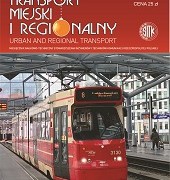
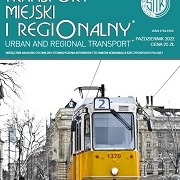 SITK
SITK 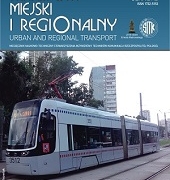
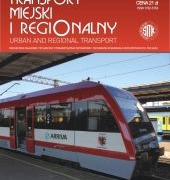 SITK RP
SITK RP 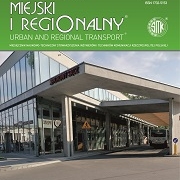 SITK
SITK 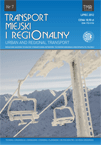 SITK RP
SITK RP 
 SITK RP
SITK RP SITK RP
SITK RP